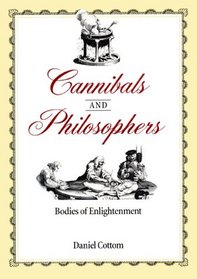Search -
Cannibals and Philosophers: Bodies of Enlightenment
Cannibals and Philosophers Bodies of Enlightenment
Author:
"Gnawing at the heart of the age of Enlightenment was the self-contradicting, self-abhorring, self-consuming figure of the cannibal: the unavoidable figure of radical metamorphosis. In the image of cannibalism, Western self-regard and its vision of otherness in nature, culture, and spirit came to a momentous crisis."--from Cannibals and Philosop... more »
Author:
"Gnawing at the heart of the age of Enlightenment was the self-contradicting, self-abhorring, self-consuming figure of the cannibal: the unavoidable figure of radical metamorphosis. In the image of cannibalism, Western self-regard and its vision of otherness in nature, culture, and spirit came to a momentous crisis."--from Cannibals and Philosop... more »
ISBN-13: 9780801865510
ISBN-10: 0801865514
Publication Date: 4/17/2001
Pages: 296
Rating: ?
ISBN-10: 0801865514
Publication Date: 4/17/2001
Pages: 296
Rating: ?
0 stars, based on 0 rating
Publisher: The Johns Hopkins University Press
Book Type: Hardcover
Members Wishing: 2
Reviews: Amazon | Write a Review
Book Type: Hardcover
Members Wishing: 2
Reviews: Amazon | Write a Review
Genres:
- History >> Europe >> England
- History >> World
- History >> Modern (16th-21st Centuries) >> 17th Century
- History >> Modern (16th-21st Centuries) >> 18th Century
- Literature & Fiction >> History & Criticism >> Criticism & Theory
- Nonfiction >> Philosophy >> Consciousness & Thought
- Nonfiction >> Social Sciences




